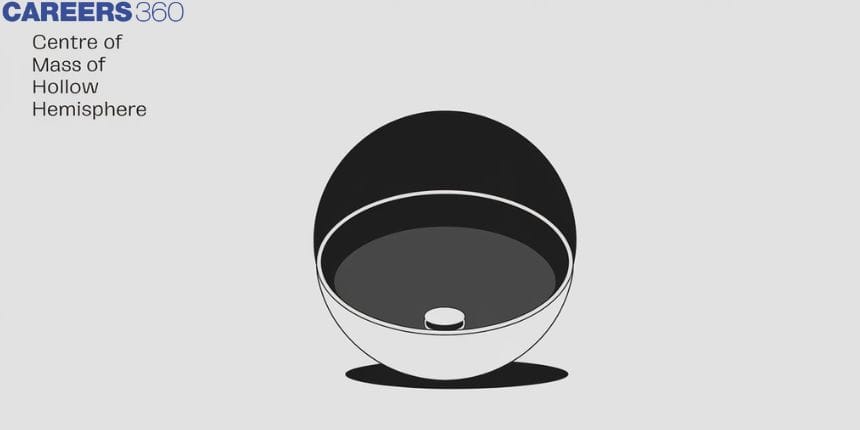Centre Of Mass Of Hollow Hemisphere
The centre of mass of a hollow hemisphere is a fundamental concept in physics, often explored in mechanics. It represents the point at which the mass of the hemisphere is considered to be concentrated for purposes of analyzing motion and balance. Unlike a solid hemisphere, the mass in a hollow hemisphere is distributed along its surface, leading to a different centre of mass position. Understanding the centre of mass is crucial for various real-life applications, such as in engineering and design. For instance, when constructing domes or arches, engineers must calculate the centre of mass to ensure structural stability and balance. This principle is also important in sports, where the distribution of mass in a ball or other equipment can affect its behaviour and trajectory. By studying the centre of mass of a hollow hemisphere, we gain insights into the behaviour of objects in motion and their equilibrium in different contexts.
JEE Main/NEET 2027: Physics Important Formulas for Class 10
NEET 2025: Mock Test Series | Syllabus | High Scoring Topics | PYQs
JEE Main: Study Materials | High Scoring Topics | Preparation Guide
JEE Main: Syllabus | Sample Papers | Mock Tests | PYQs
- Definition of Centre of Mass
- Centre of mass for Hollow Hemisphere
- Summary

Definition of Centre of Mass
The Centre of mass of a body is defined as a single point at which the whole mass of the body or system is imagined to be concentrated and all external forces are applied there. It is the point where if a force is applied it moves in the direction of the force without rotating.
Centre of Mass of a Continuous Distribution
The centre of mass of a continuous distribution is a key concept in physics that extends beyond simple, discrete systems to more complex, continuous ones. Unlike objects with distinct masses located at specific points, continuous distributions involve mass spread over a region, such as a rod, a plate, or even a fluid. To find the centre of mass in such cases, we consider each infinitesimally small mass element and calculate its contribution to the overall position.
Where dm is the mass of the small element. x, y, z are the coordinates of the dm part.
Centre of mass for Hollow Hemisphere
Have a look at the figure of the Hollow Hemisphere

Since it is symmetrical about the y-axis
So we can say that it's
Now we will calculate its
So, Take a small elemental ring of mass dm of radius r at a height y from the origin as shown in the figure.

And,
So
So
Recommended Topic Video
Solved Examples Based on Centre of Mass of Hollow Hemisphere
Example 1: A hollow hemisphere of mass m is placed on a hollow sphere of mass m. The centre of mass of the given arrangement from point A is at the height

1)
2)
3)
4)
Solution:

Hence, the answer is the option (2).
Example 2: As shown in the figure a Hollow hemisphere of mass M and radius R is given with its centre at the origin 0 If the point P is on the y-axis and is at a distance
Then what is the distance from the C.O.M. of the Hollow hemisphere?

1)
2)
3)
4)
Solution:
As for the Hollow Hemisphere, its y-coordinates of COM are given as
So for the below figure

so,
Hence, the answer is the option (2).
Summary
The centre of mass of a hollow hemisphere is a crucial concept in physics, essential for analyzing the motion and stability of objects. It is defined as the point where the mass of the body is considered concentrated. For a hollow hemisphere, the centre of mass lies at a height of R/2 from the base, and this concept is applied in various real-life situations, such as in structural engineering and sports equipment design. Understanding this helps in solving complex problems involving continuous mass distributions.
Also Read
05 Feb'25 04:39 PM
25 Dec'24 10:26 AM
29 Nov'24 08:18 PM
29 Nov'24 11:02 AM
13 Nov'24 09:48 AM
12 Nov'24 11:22 PM
11 Nov'24 05:38 PM
11 Nov'24 11:37 AM
26 Sep'24 11:20 AM
26 Sep'24 11:12 AM

